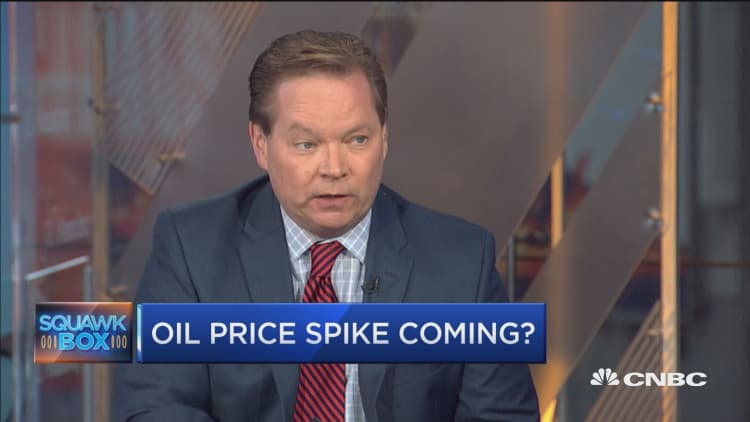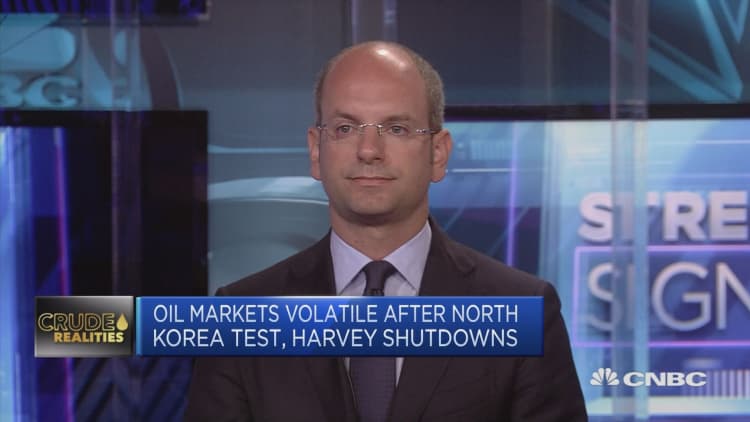U.S. oil prices rose on Tuesday and gasoline fell as the gradual restart of refineries in the Gulf of Mexico that were shut by Hurricane Harvey raised demand for crude and eased fears of a serious supply crunch.
Gasoline futures dropped 3.1 percent from their last close, to $1.6938 per gallon by 12:26 p.m. ET (1626 GMT), down from $2.17 on Aug. 31 and back to levels last seen before Harvey hit the U.S. Gulf Coast and its large refining industry.
U.S. West Texas Intermediate (WTI) crude futures rose $1.52, or 3.2 percent, $48.81 barrel.
"Gasoline fell as refineries in Texas began to reopen," said William O'Loughlin, investment analyst at Rivkin Securities.

Texas on Monday edged towards recovery from the devastation of Hurricane Harvey as shipping channels, oil pipelines and refineries restarted some operations.
Eight U.S. oil refineries with 2.1 million barrels per day of refining capacity, or 11.4 percent of the U.S. total, were shut as of Monday afternoon, the Department of Energy said.
In international oil markets, were up $1.14, or 2.2 percent, at $53.48 a barrel amid signals the Organization of the Petroleum Exporting Countries could extend its output limits beyond the first quarter of 2018.
Russia and Saudi Arabia have discussed extending an oil output cut by OPEC and non-OPEC producers but no specific decisions have been made yet, Russian Energy Minister Alexander Novak was quoted as saying on Tuesday.
Iranian Oil Minister Bijan Zangeneh said unofficial talks were under way to extend the cuts, adding that global crude inventories remained at high levels.
Brent prices eased earlier in the session, as traders pulled money out of oil — seen as a riskier asset — and instead poured it into gold, an investor safe-haven, following North Korea's most powerful nuclear test to date.

Harvey hit the Texan coast late on August 25 and at its peak had knocked out almost a quarter of the entire U.S. refining capacity.
Another Hurricane — Irma — strengthened on Tuesday into a Category 5 hurricane, the most powerful storm on the Saffir-Simpson scale with sustained winds of over 157 miles per hour.
The U.S. National Hurricane Centers forecast path for the storm has Irma passing south of Florida on Sunday on its way into the Gulf of Mexico.
Most forecast models show the storm keeping east of the U.S. oil and gas platforms in the Gulf, but the NHC said that it is too early to determine the direct impacts Irma might have on the continental United States.
September is typically the peak of the hurricane season. Another storm is developing behind Irma in the Atlantic, and an area of bad weather in the southwest Gulf of Mexico threatens to become a tropical storm in the next two days.

